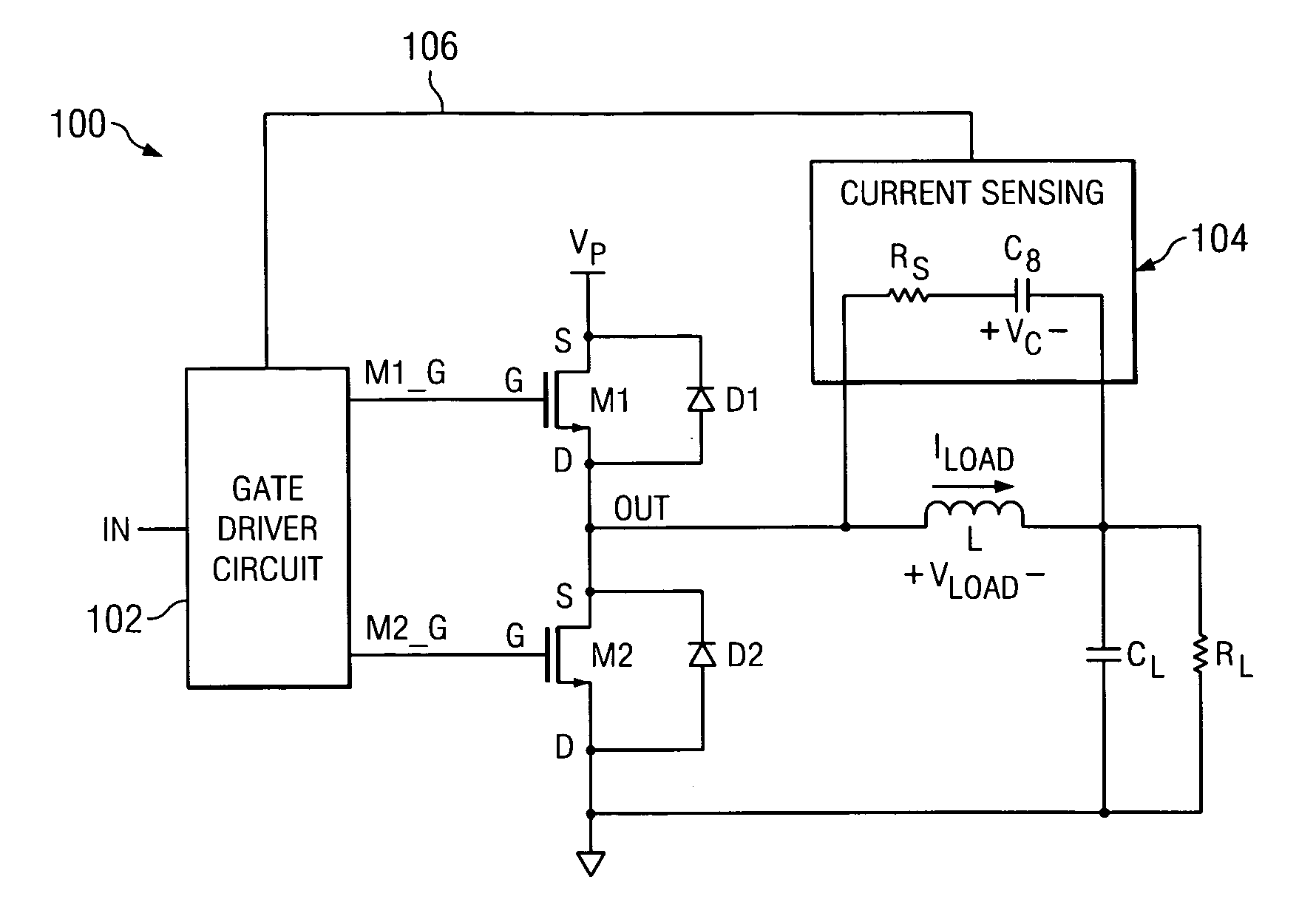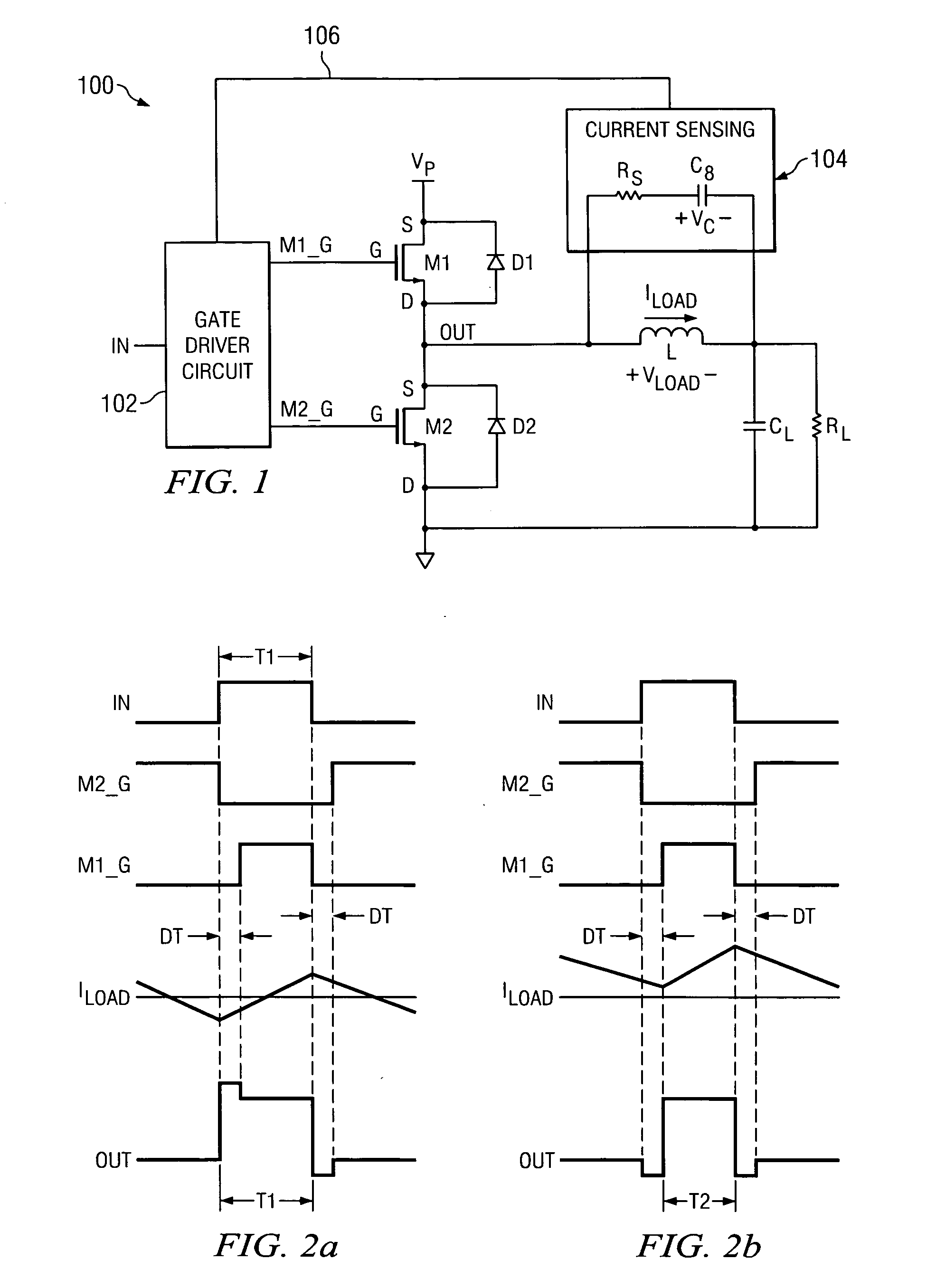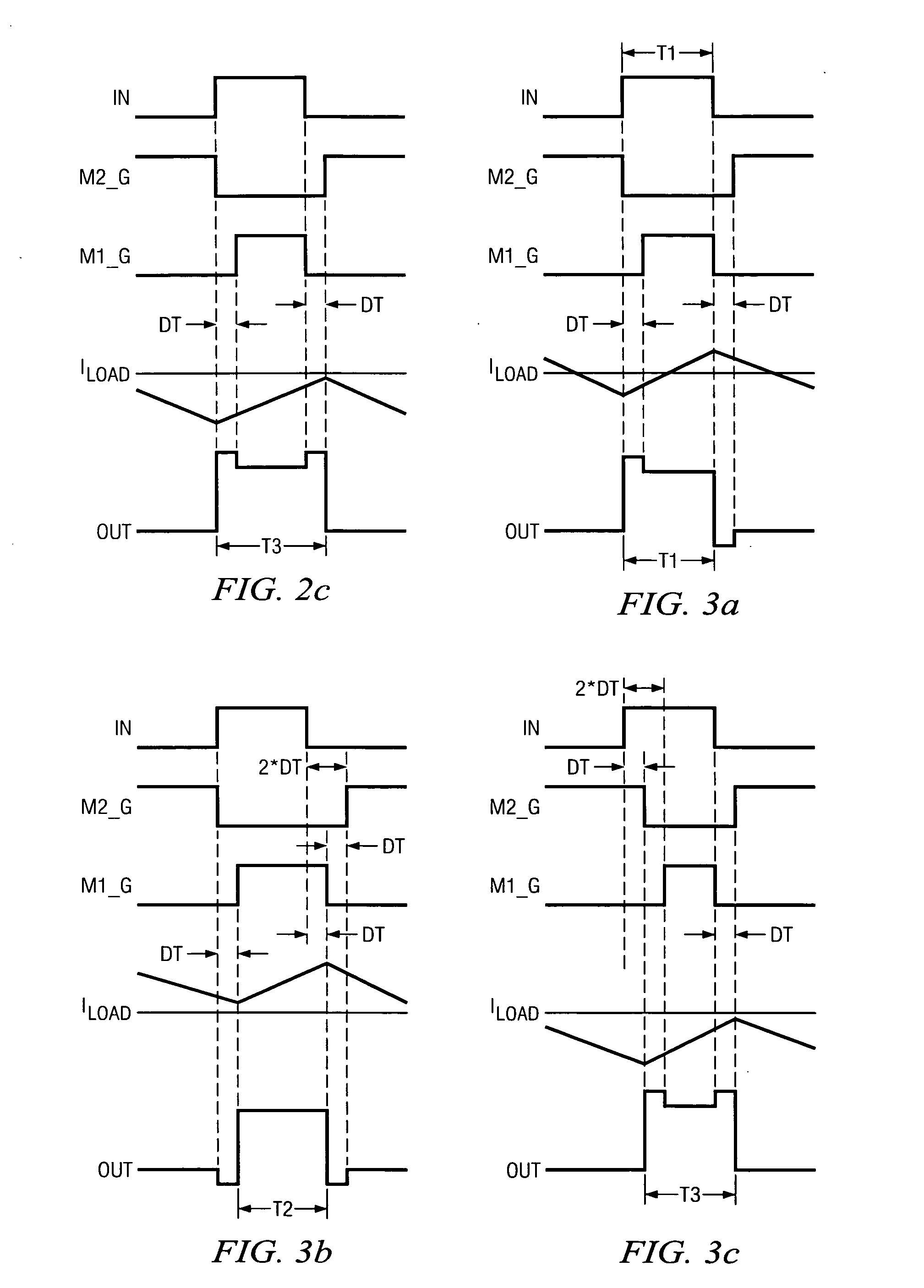Compensation of nonlinearity introduced by dead time in switching output stage
a technology of output stage and compensation, which is applied in the direction of amplifiers, dc amplifiers with modulator-demodulator, amplifiers, etc., can solve the problems of total harmonic distortion, different duty cycle of amplifier output and amplifier input, and adversely affecting specified amplifier performance characteristics
- Summary
- Abstract
- Description
- Claims
- Application Information
AI Technical Summary
Benefits of technology
Problems solved by technology
Method used
Image
Examples
Embodiment Construction
[0021] A method of operating a class D amplifier output stage is disclosed that compensates for nonlinearity introduced by the dead time in the switching of the output stage. FIG. 1 depicts an illustrative embodiment of a class D amplifier output stage 100, in accordance with the present invention. In the illustrated embodiment, the amplifier output stage 100 comprises an input IN, an output OUT, first and second output transistors M1-M2, a gate driver circuit 102, and a current sensing circuit 104, which includes a resistor Rs and a capacitor Cs connected in series across an inductive load L. For example, the output transistors M1-M2 can be respective MOSFET power transistors, or any other suitable type of transistor. In the preferred embodiment, each one of the transistors M1-M2 is an N-type double diffused MOS (DMOS) power transistor.
[0022] As shown in FIG. 1, the output transistors M1-M2 are serially connected between first and second terminals of a power supply. In the illustr...
PUM
 Login to View More
Login to View More Abstract
Description
Claims
Application Information
 Login to View More
Login to View More - R&D
- Intellectual Property
- Life Sciences
- Materials
- Tech Scout
- Unparalleled Data Quality
- Higher Quality Content
- 60% Fewer Hallucinations
Browse by: Latest US Patents, China's latest patents, Technical Efficacy Thesaurus, Application Domain, Technology Topic, Popular Technical Reports.
© 2025 PatSnap. All rights reserved.Legal|Privacy policy|Modern Slavery Act Transparency Statement|Sitemap|About US| Contact US: help@patsnap.com



